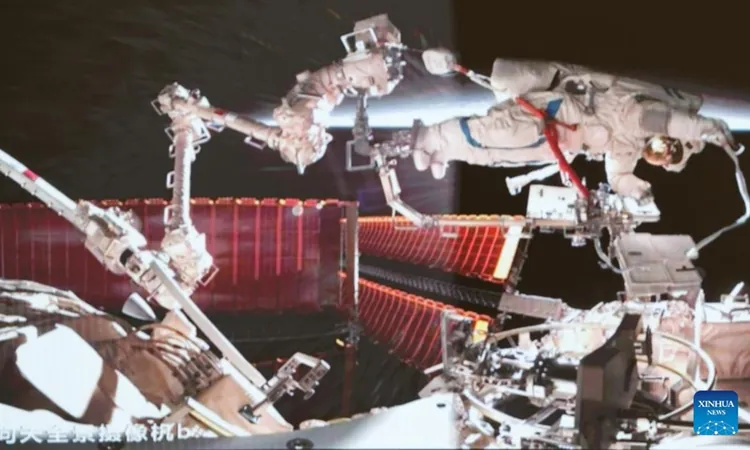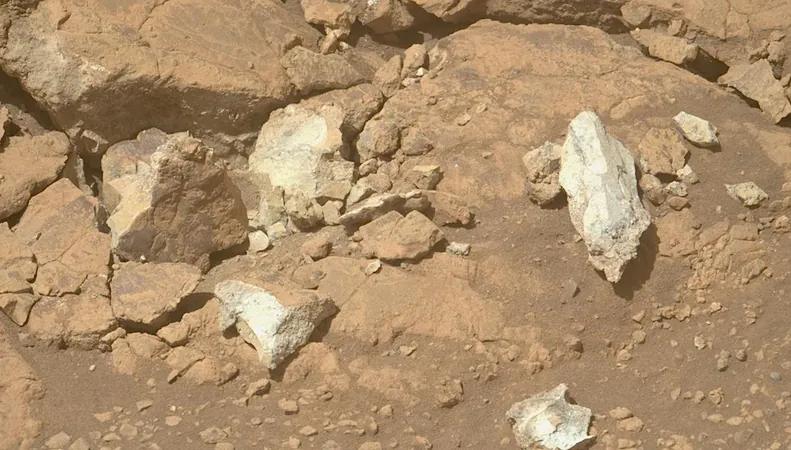
Shenzhou-19 Crew Triumphs in Spacewalks and Celebrates New Year Among the Stars
2025-01-21
Author: Benjamin
Major Milestones in Space Exploration
The CMSA has outlined ambitious plans for 2025, including three key missions aimed at advancing human spaceflight capabilities. The crew, consisting of commander Cai Xuzhe and astronaut Song Lingdong, was supported during their spacewalk by the station's robotic arm, enabling them to install essential space debris protection devices and conduct thorough inspections. The culmination of their efforts marks another monumental step forward in China's quest for space exploration.
Celebrating Tradition in Space
In an inspiring twist to their rigorous work schedule, the Shenzhou-19 crew will celebrate the Chinese New Year of the Snake while orbiting Earth. As they safeguard their "space home," they will observe the festive lights illuminating thousands of households below, symbolizing connection and unity despite the vastness of space.
Research Achievements and Future Goals
The China Space Station marks its third year in operation, boasting over 180 scientific and application projects conducted so far. This includes nearly 2 tons of experimental modules dispatched into space, alongside the return of almost 100 distinct experimental samples.
Researchers at the Institute of Biophysics have recently been analyzing footage of fruit flies sent to the space station, leaning into their unique growth and reproduction behaviors in microgravity. The findings reveal that while fruit flies exhibit some familiar behaviors, such as mating and reproduction, they also display novel actions, like floating and flipping, diverging significantly from their terrestrial counterparts.
Using advanced video processing technologies and artificial intelligence, researchers have amassed over 4 terabytes of footage, vital for understanding developmental patterns in space. Remarkably, these fruit flies have produced a third generation during their two-month orbital stay, showcasing the potential for biological research in space.
Parallel to biological studies, researchers are also investigating refractory alloys. Their focus lies on challenging alloy materials that can offer substantial benefits for future aerospace applications, such as aircraft engine blades. Experts are looking towards the development of high-entropy alloys—crafted from various metals—and functional crystals, aiming to harness the unique conditions of space for material science breakthroughs.
Looking Ahead: Exciting Missions and Innovations
The CMSA has unveiled the logos for three crucial projects in China's manned space program for 2025, including the anticipated launches of Shenzhou-20, Shenzhou-21, and Tianzhou-9. Both Shenzhou-20 and Shenzhou-21 will feature three-member astronaut crews, each with specific tasks related to EVAs, cargo deliveries, and scientific experiments—pushing the boundaries of human capabilities in space.
Expected to launch in the latter part of 2025, the Tianzhou-9 cargo spacecraft will transport vital supplies, propellants, and payloads necessary for the ongoing operation of the Chinese space station, marking yet another leap in China's expanding presence in the cosmos.
As China continues to lead in cutting-edge space research and exploration, the excitement surrounding these missions is palpable, setting the stage for significant advancements in both scientific understanding and technological innovation in the years to come.









 Brasil (PT)
Brasil (PT)
 Canada (EN)
Canada (EN)
 Chile (ES)
Chile (ES)
 Česko (CS)
Česko (CS)
 대한민국 (KO)
대한민국 (KO)
 España (ES)
España (ES)
 France (FR)
France (FR)
 Hong Kong (EN)
Hong Kong (EN)
 Italia (IT)
Italia (IT)
 日本 (JA)
日本 (JA)
 Magyarország (HU)
Magyarország (HU)
 Norge (NO)
Norge (NO)
 Polska (PL)
Polska (PL)
 Schweiz (DE)
Schweiz (DE)
 Singapore (EN)
Singapore (EN)
 Sverige (SV)
Sverige (SV)
 Suomi (FI)
Suomi (FI)
 Türkiye (TR)
Türkiye (TR)
 الإمارات العربية المتحدة (AR)
الإمارات العربية المتحدة (AR)